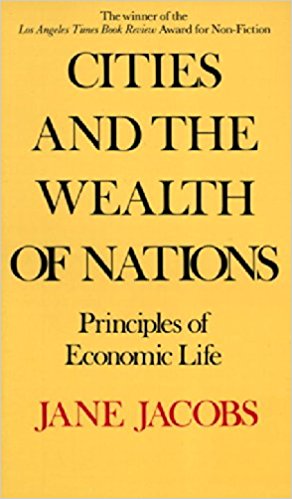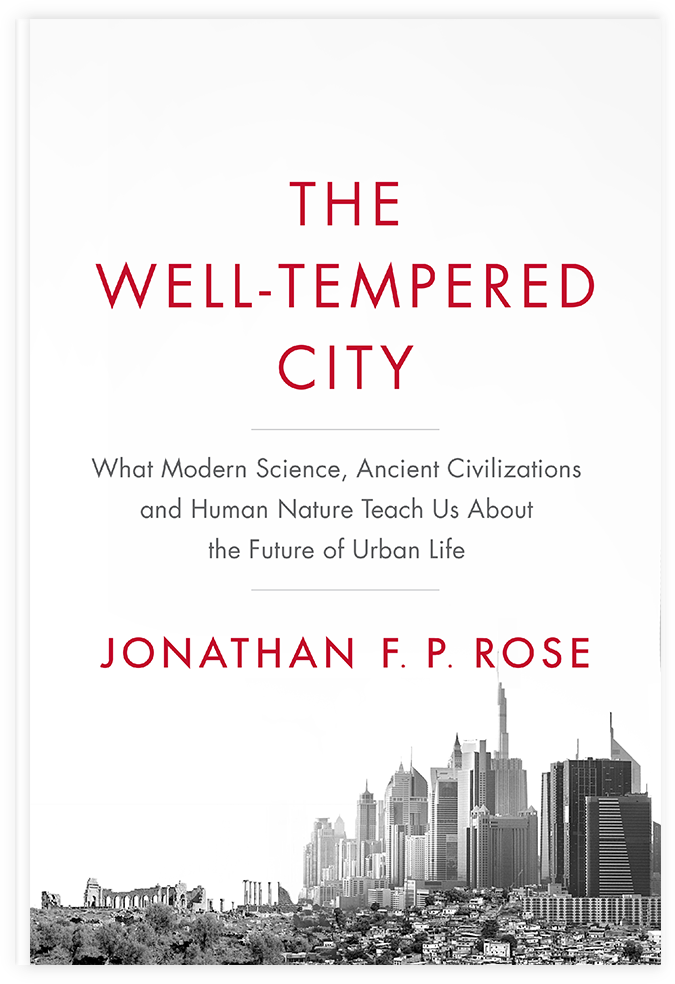Physical Address
304 North Cardinal St.
Dorchester Center, MA 02124
Physical Address
304 North Cardinal St.
Dorchester Center, MA 02124

We are blessed and cursed to live in times in which most smart people are expected to have an opinion on zoning. Blessed, in that zoning is arguably the single most important institution shaping where we live, how we move around, and who we meet. Cursed, in that zoning is notoriously obtuse, with zoning ordinances often cloaked in jargon, hidden away in PDFs, and completely different city-to-city. Given this unusual state of affairs, I’m often asked, “What should I read to understand zoning?” To answer this question, I have put together a list of books for the zoning-curious. These have been broken out into three buckets: “Introductory” texts largely lay out the general challenges facing cities, with—at most—high-level discussions of zoning. Most people casually interested in cities can stop here. “Intermediate” texts address zoning specifically, explaining how it works at a general level. These texts are best for people who know a thing or two about cities but would like to learn more about zoning specifically. “Advanced” texts represent the outer frontier of zoning knowledge. While possibly too difficult or too deep into the weeds to be of interest to most lay observers, these texts should be treated as essential among professional planners, urban economists, and urban designers. Before I start, a few obligatory qualifications: First, this not an exhaustive list. There were many great books that I left out in order to keep this list focused. Maybe you feel very strongly that I shouldn’t have left a particular book out. That’s great! Share it in the comments below. Second, while these books will give you a framework for interpreting zoning, they’re no substitute for understanding the way zoning works in your specific city. The only way to get that knowledge is to follow your local planning journalists, attend local […]
This book is an attack on current city planning and rebuilding. This is how Jane Jacobs opened her 1961 classic “The Death and Life of Great American Cities”. It wouldn’t be an inappropriate opener for Alain Bertaud’s upcoming “Order Without Design”. While Jacobs was an observer of how cities work and a contributor to new concepts in urban economics, Bertaud goes a step further. His book brings economic logic and quantitative analysis to guide urban planning decision-making, colored by a hands-on, 55-year career as a global urban planner. His conclusion? The urban planning practice is oblivious to the economic effects of their decisions, and eventually creates unintended consequences to urban development. His goal with this book is to bring economics as an important tool to the urban planning profession, and to bring economists closer to the practical challenge of working with cities. Maybe you have not heard about Alain Bertaud before: at the time I am writing this article, he has only a few articles published online, no Wikipedia page or Twitter account, and some lectures on YouTube – and nothing close to a TED talk. The reason is that instead of working on becoming a public figure, Bertaud was actually doing work on the ground, helping cities in all continents tackle their urban development problems. His tremendous experience makes this book that delves into urban economics surprisingly exhilarating. As an example, Bertaud shows a 1970 photo from when he was tracing new streets in Yemen using a Land Rover and the help of two local assistants who look 12 years old at most, a depiction of a real-life Indiana Jones of urban planning. In this book, mainstream urban planning “buzzwords” such as Transit-Oriented Development, Inclusionary Zoning, Smart Growth and Urban Growth Boundaries are challenged with economic analysis, grounded on […]

Alain Bertaud’s long awaited book, Order Without Design: How Markets Shape Cities, is out today. Bertaud is a senior research scholar at the NYU Marron Institute of Urban Management and former principle urban planner at the World Bank. Working through a pre-release copy over the past few weeks, I can confidently say that the book is an instant classic of the urban planning genre, and will be of significant special interest to market urbanists in particular. Rare among writers in this space, Bertaud brings an architect’s eye, an economist’s mind, and a planner’s experience to contemporary urban issues, producing a text that is theoretically enriching and practically useful. Alain and Marie-Agnes—his wife and research partner—have lived in worked in over a half-dozen cities all over the world, from Sana’a to Paris to San Salvador to Bangkok. For the reader, this means that Bertaud can speak from experience, supplementing data and theory with entertaining, real world examples and war stories. Order your copy today!

In Generation Priced Out, housing activist Randy Shaw writes a book about the rent crisis for non-experts. Shaw’s point of view is that of a left-wing YIMBY: that is, he favors allowing lots of new market-rate housing, but also favors a variety of less market-oriented policies to prevent displacement of low-income renters (such as rent control, and more generally policies that make it difficult to evict tenants). What I liked most about this breezy, easy-to-read book is that it rebuts a wide variety of anti-housing arguments. For example, NIMBYs sometimes argue that new housing displaces affordable older housing. But Shaw shows that NIMBY homeowners oppose apartment buildings even when this is not the case; apartments built on parking lots and vacant lots are often controversial. For example, in Venice, California, NIMBYs opposed “building 136 supportive housing units for low-income people on an unsightly city-owned parking lot.” NIMBYs may argue that new housing will always be for the rich. But Shaw cites numerous examples of NIMBYs opposing public housing for the poor as well as market-rate housing for the middle and upper classes. NIMBYs also claim that they seek to protect their communities should be protected against skyscrapers or other unusually large buildings. But Shaw shows that NIMBYs have fought even the smallest apartment buildings. For example, in Berkeley, NIMBYs persuaded the city to reject a developer’s plan to add only three houses to a lot. On the other hand, market urbanists may disagree with Shaw’s advocacy of a wide variety of policies that he refers to as “tenant protections” such as rent control, inclusionary zoning, increased code enforcement, and generally making it difficult to evict tenants. All of these policies make it more difficult and/or expensive to be a landlord, thus creating costs that may either be passed on to tenants […]
I recently read a highly publicized pro-NIMBY book, Vanishing New York. The author, who goes by the pen name “Jeremiah Moss” tells a simple story: throughout New York, gentrification and chain stores are on the march, making the city rich and boring. The story has an element of truth: obviously, there are some places that have gentrified, and there are some places (mostly notably Times Square) that have lots and lots of banks and chain stores. But on balance, the book’s relationship with factual reality is a bit uneven. Much of the book complains about the evils of gentrification. But in fact, even in Manhattan the poverty rate is 17.9 percent, about three times that of most New York suburbs. Moss also claims that the city is getting whiter, but even Manhattan is 40 percent black and Hispanic, and New York City as a whole is 54 percent black and Hispanic. By contrast, in 1980 the city was only 45 percent black/Hispanic, and in 1940 it was over 90 percent white. Moss seems to think that the city is being taken over by chain stores. The last time I walked through the East Village (one of the neighborhoods he writes about) I found about one or two such stores per block, or about 5 or 10 percent of all storefronts. My guess is that Moss thinks about chain stores the way many racists think about racial minorities: because they assume one is too many, 5 percent seems to them like a takeover. Moss is all for immigration from foreign nations, but constantly complains about newcomers, especially parents; he uses the word “stroller” like anti-Semites use the term “international bankers”- as a code-word for a dreaded enemy. He has a problem with college students too (complaining about “NYU’s presence… [having] spread […]

At 4:30 am, alarms on my cellphone and tablet start beeping, just enough out of sync to prompt me to get up and turn them off. By 5:00 am, I riding as a passenger along an unusually sedate New Jersey Turnpike, making friendly conversation with my driver and survey partner to make sure he stays awake. At 5:30am, as most of the city sleeps, we find a drab concrete picnic table outside the bus depot and chow down on our cold, prepared breakfasts. Around us, buses are revving up and their drivers are chatting and smoking cigarettes. At 5:50 am, we find our bus and introduce ourselves to our driver for the day. All of the Alliance drivers seem to be Hispanic. Our run begins. You wouldn’t expect it, but the first run is always the sweetest. The riders trickle on, making it easy to approach them, and unlike the typical 8:00 am rush hour rider they are usually friendly and receptive to my request. I approach them and mechanically incant “Good morning Sir/Ma’am. Would you like to take a survey on your commute today for NJ Transit? It will only take a few minutes of your time.” My partner sits in the front, tallying the boardings, exits, and survey refusals. We will spend the next eight hours zigzagging across the New York City metropolitan area, asking harried riders about their commute. For the past month or so, this has been my part-time job: surveying bus riders about their origins, destinations, and travel preferences for NJ Transit. The job is just engaging enough that I rarely have time for sleeping or class readings, but has enough slow periods that my mind can wander on the question of bus planning. Although I am not authorized to read any of the surveys […]
Caos Planejado, in conjunction with Editora BEI/ArqFuturo, recently published A Guide to Urban Development (Guia de Gestão Urbana) by Anthony Ling. The book offers best practices for urban design and although it was written for a Brazilian audience, many of its recommendations have universal applicability. For the time being, the book is only available in Portuguese, but after giving it a read through, I decided it deserved an english language review all the same. The following are some of the key ideas and recommendations. I hope you enjoy. GGU sets the stage with a broad overview of the challenges facing Brazilian cities. Rapid urbanization has put pressure on housing prices in the highest productivity areas of the fastest growing cities and car centric transportation systems are unable to scale along with the pace of urban growth. After setting the stage, GGU splits into two sections. The first makes recommendations for the regulation of private spaces, the second for the development and administration of public areas. Reforming Regulation Section one will be familiar territory for any regular MU reader. GGU advocates for letting uses intermingle wherever individuals think is best. Criticism of minimum parking requirements gets its own chapter. And there’s a section a piece dedicated to streamlining permitting processes and abolishing height limits. One interesting idea is a proposal to let developers pay municipalities for the right to reduce FAR restrictions. This would allow a wider range of uses to be priced into property values and create the institutional incentives to gradually allow more intensive use of land over time. Meeting People Where They Are Particular to the Brazilian experience is a section dedicated to formalizing informal settlements, or favelas. These communities are found in every major urban center in the country and often face persistent, intergenerational poverty along with […]

I just finished reading Richard Florida’s new book, The New Urban Crisis. Florida writes that part of this “crisis” is the exploding cost of housing in some prosperous cities. Does that make him a market urbanist? Yes, and no. On the one hand, Florida criticizes existing zoning laws and the NIMBYs who support them. He suggests that these policies not only raise housing prices, but by doing so harm the economy as a whole. For example, he writes that if “everyone who wanted to work in San Francisco could afford to live there, the city would see a 500 percent increase in jobs… On a national basis, [similar results] would add up to an annual wage increase of $8775 for the average worker, adding 13.5 percent to America’s GNP – a total gain of nearly $2 trillion” (p 27). On the other hand, Florida is not ready to endorse the idea that “we can make our cities more affordable… simply by getting rid of existing land use restrictions” because “the high cost of land in superstar neighborhoods makes it very hard if not impossible, for the private market to create affordable housing in their vicinity. Combine the high costs of land with the high costs of high-rise construction and the result is more high-end luxury housing.” (p. 28). I don’t find his point persuasive, for a variety of reasons. First, as I have written elsewhere, land prices are often quite volatile. Second, the overwhelming majority of any region’s housing is not particularly new; even in high-growth Houston, only 2 percent of housing units were built after 2010. Thus, new market-rate housing is likely to affect rents by affecting the price of older housing, rather than by bringing new cheap units into the market. Florida also writes that “too much density can […]

No one writer of the last 60 years has influenced urban planning and thinking as much as Jane Jacobs. It seems like just about everyone who has ever set foot in a major city has read The Death and Life of Great American Cities and most professional urban planners have embraced at least part of her ideas. But that was not the only book she wrote and the others deserve attention from urbanists. First published in 1984, Cities and the Wealth of Nations was her last book to focus on cities and her second concerned with economics. Conceived at the height of 1970s stagflation, Jacobs brought her considerable polemical skills to bear on macroeconomics and elaborated on the observations in The Economy of Cities. In that book she theorized that economic expansion in cities was driven by trade, innovation and imitation in a process she called “import replacement”. In this one she extended the idea, arguing that cities and not nation-states are the real basic units of macroeconomic life. She also examined how the economic expansion affected regions in differing geographic proximity and how import-replacement and the wealth generated by it can be used in ways that ultimately undermine the abilities of cities to create wealth, which she called transactions of decline. Import-replacement is one of Jacobs’ more controversial ideas, partially because it seems similar to a discredited development policy called import substitution and partially because her evidence is largely anecdotal, as Alon Levy wrote back in 2007. Nevertheless it’s the centerpiece of Jacobs’ economic theories. And dismissing her work based on a lack of conventional credentials ignores her entire rise to fame and influence. Two important things distinguish import-replacement from import-substitution. Substitution is a national policy pursued by governments with taxes, tariffs and subsidies while replacement is a process […]

This book review is part of a TLC Book Tour. The Well-Tempered City: What Modern Science, Ancient Civilizations, and Human Nature Teach Us About the Future of Urban Life by Jonathan F. P. Rose In The Well-Tempered City, real estate developer Jonathan F. P. Rose offers a sweeping history of cities and equally grandiose policy proposals to improve urban outcomes. In the vein of Jane Jacobs and F.A. Hayek, Rose identifies that cities are “wicked” problems rather than engineering problems that policymakers can solve through tinkering. In spite of this recognition of the complexity of cities’ interrelated systems, Rose asserts that cities need visionaries to address problems from obesity to climate change from the top down. Rose leads with the most interesting section of his book on the origins of early cities. In support of his theory that great cities are built by visionaries, he focuses on ancient cities that were founded around religious sites, including Uruk and Teotihuacan, downplaying the path of great cities emerged organically from trading posts, like Venice or Rotterdam. He advocates for the benefits of orderly urban layouts like Hippodamian plan or the magic square that ancient Chinese cities followed. A theme running throughout the book is that American urban planning has embraced the Western values of individualism and free will while giving short shrift to the Eastern value of harmony, such as the unification that comes from top-down urban design. In support of more cohesive plans, Rose downplays the incredible progress that has been possible through decentralized urban and economic development. Throughout the book, Rose argues that American cities are suffering from a lack of vision from their planners. Unlike ancient leaders who built grand temples and imposing walls, today’s planners focus on enforcing rules rather than defining a city’s aesthetics. He writes: It turns out that a city can pick any […]